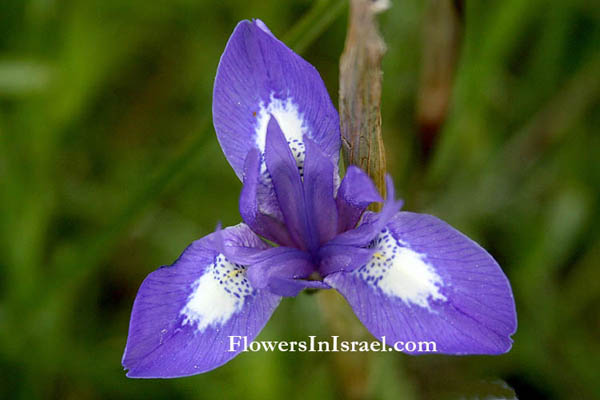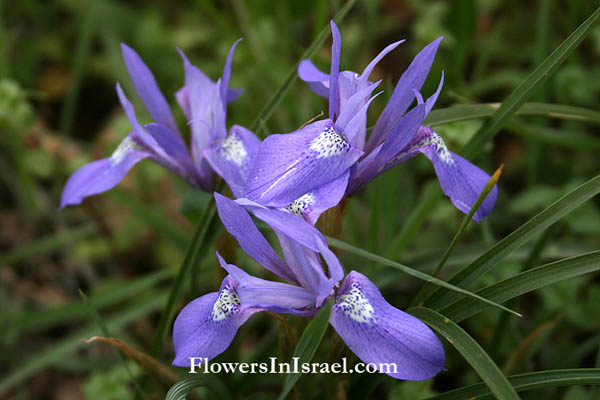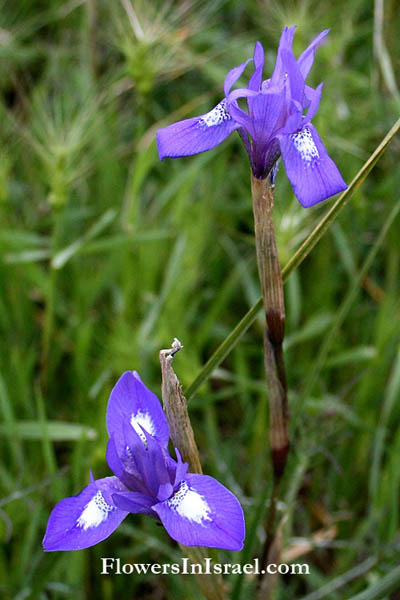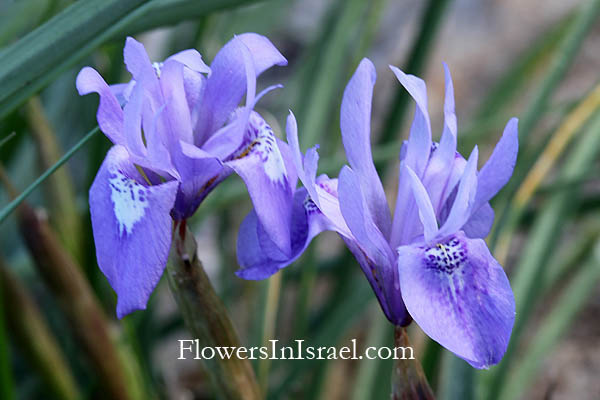Hebrew: אחיאירוס מצוי, אירוס מצוי, צהרון מצוי, Arabic: سوسن عادي
| Scientific name: | Gynandriris sisyrinchium (L.) Parl. | |
| Synonym name: | Moraea sisyrinchium, Iris sisyrinchium L. | |
| Common name: | Barbary Nut | |
| Hebrew name: | אחיאירוס מצוי, אירוס מצוי, צהרון מצוי | |
| Arabic name: | سوسن عادي | |
| Family: | Iridaceae, אירוסיים |

|
| Life form: | Geophyte; rootstock a corm, of solid substance not arranged in rings | |
| Stems: | Up to 30 cm tall | |
| Leaves: | Rosette, entire, linear, strongly veined leaves | |
| Inflorescence: | Cymose corymbs | |
| Flowers: | Dark Blue, purple; individual flowers lasting a few hours | |
| Fruits / pods: | Capsules subglobose, about 2.0 mm long, 1.8 mm wide, at most slightly compressed, often with a distinct lateral ridge or narrow wing | |
| Flowering Period: | January, February, March, April | |
| Habitat: | Batha, Phrygana, Shrub-steppes, Desert | |
| Distribution: | Mediterranean Woodlands and Shrublands, Semi-steppe shrublands, Shrub-steppes, Deserts and extreme deserts, Montane vegetation of Mt. Hermon | |
| Chorotype: | Med - Irano-Turanian | |
| Summer shedding: | Ephemeral |

Derivation of the botanical name: Gynandriris, Greek gyne, female and andros, male; refers to the united pistil and stamens. sisyrinchium, Greek σίσύρα sisyra, 'a cloak of shaggy goat's skin' and was applied to this plant because of the thick covering of coarse fibres which surrounds the corm. Moraea, in honor of (esquire of Shropshire) Robert More (1703-1780), an English amateur botanist and natural historian.


|